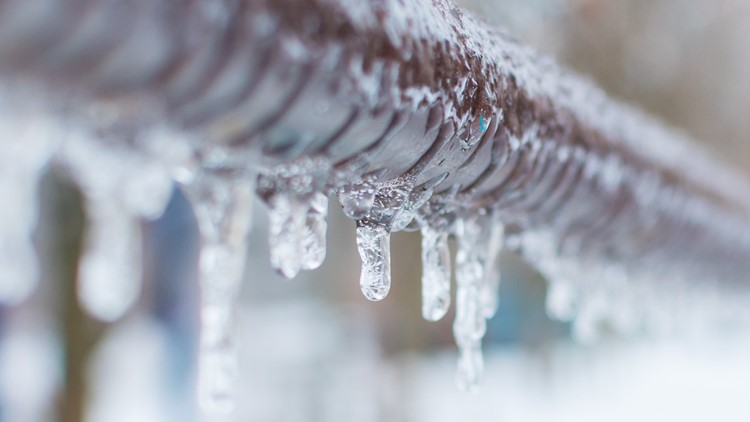Everybody has their unique assumption involving 6 Ways to Prevent Frozen Pipes.

Winter can ruin your pipes, particularly by freezing pipelines. Below's just how to prevent it from occurring and what to do if it does.
Introduction
As temperatures decrease, the danger of icy pipelines rises, possibly causing expensive repair services and water damages. Understanding how to stop icy pipes is essential for house owners in cool environments.
Avoidance Tips
Shielding vulnerable pipes
Wrap pipelines in insulation sleeves or use warm tape to shield them from freezing temperatures. Focus on pipelines in unheated or exterior locations of the home.
Heating techniques
Maintain indoor spaces properly warmed, especially locations with plumbing. Open up cupboard doors to enable warm air to distribute around pipelines under sinks.
Exactly how to recognize frozen pipelines
Search for decreased water circulation from taps, unusual smells or noises from pipelines, and visible frost on subjected pipelines.
Long-Term Solutions
Architectural changes
Consider rerouting pipes away from exterior wall surfaces or unheated areas. Include extra insulation to attic rooms, cellars, and crawl spaces.
Updating insulation
Invest in high-quality insulation for pipelines, attic rooms, and wall surfaces. Correct insulation assists preserve regular temperatures and decreases the threat of icy pipes.
Protecting Outdoor Pipes
Garden tubes and outside taps
Disconnect and drain yard hoses prior to winter. Set up frost-proof faucets or cover exterior taps with shielded caps.
Understanding Frozen Pipelines
What triggers pipelines to freeze?
Pipelines freeze when subjected to temperatures below 32 ° F (0 ° C) for prolonged durations. As water inside the pipes freezes, it increases, taxing the pipe walls and potentially triggering them to rupture.
Dangers and problems
Frozen pipes can bring about water disruptions, residential property damage, and pricey repair work. Ruptured pipes can flooding homes and cause comprehensive architectural damage.
Signs of Frozen Pipeline
Recognizing icy pipelines early can stop them from breaking.
What to Do If Your Pipelines Freeze
Immediate activities to take
If you suspect icy pipes, maintain taps open to ease stress as the ice thaws. Make use of a hairdryer or towels soaked in hot water to thaw pipelines gradually.
Conclusion
Protecting against icy pipes requires proactive steps and quick feedbacks. By recognizing the causes, indications, and safety nets, house owners can secure their plumbing throughout cold weather.
Helpful Tips to Prevent Frozen Pipes this Winter
UNDERSTANDING THE BASICS: WHY PIPES FREEZE AND WHY IT’S A PROBLEM
Water freezing inside pipes is common during the winter months, but understanding why pipes freeze, and the potential problems it can cause is crucial in preventing such incidents. This section will delve into the basics of why pipes freeze and the associated problems that may arise.
THE SCIENCE BEHIND FROZEN PIPES
When water reaches freezing temperatures, it undergoes a physical transformation and solidifies into ice. This expansion of water as it freezes is the primary reason pipes can burst. As the water inside the pipe freezes, it expands, creating immense pressure on the walls. If the pressure becomes too great, the pipe can crack or rupture, leading to leaks and water damage.
FACTORS THAT CONTRIBUTE TO PIPE FREEZING
Low Temperatures: Extremely cold weather, especially below freezing, increases the risk of pipes freezing. Uninsulated or Poorly Insulated Pipes: Pipes located in unheated areas, such as basements, crawl spaces, or attics, are more prone to freezing. Insufficient insulation or lack of insulation altogether exacerbates the problem. Exterior Wall Exposure: Pipes running along exterior walls are susceptible to freezing as they encounter colder temperatures outside. Lack of Heating or Temperature Regulation: Inadequate heating or inconsistent temperature control in your home can contribute to frozen pipes. PROBLEMS CAUSED BY FROZEN PIPES
- Pipe Bursting: As mentioned earlier, the expansion of water as it freezes can cause pipes to burst, resulting in significant water damage.
- Water Damage: When pipes burst, it can lead to flooding and water damage to your property, including walls, ceilings, flooring, and personal belongings.
- Structural Damage: Prolonged exposure to water from burst pipes can compromise the structural integrity of your home, leading to costly repairs.
- Mold and Mildew Growth: Excess moisture from water damage can create a favorable environment for mold and mildew growth, posing health risks to occupants.
- Disrupted Water Supply: Frozen pipes can also result in a complete or partial loss of water supply until the issue is resolved.
WHY CERTAIN PIPES ARE MORE PRONE TO FREEZING
- Location: Pipes located in unheated or poorly insulated areas, such as basements, crawl spaces, attics, or exterior walls, are at higher risk of freezing.
- Exterior Pipes: Outdoor pipes, such as those used for irrigation or exposed plumbing, are particularly vulnerable to freezing as they are directly exposed to the elements.
- Supply Lines: Pipes that carry water from the main water supply into your home, including the main water line, are critical to protect as freezing in these lines can affect your entire plumbing system.
- Underground Pipes: Pipes buried underground, such as those connected to sprinkler systems or outdoor faucets, can be susceptible to freezing if not properly insulated.
https://busybusy.com/blog/helpful-tips-to-prevent-frozen-pipes-this-winter/

Do you enjoy reading up on How To Avoid Freezing Pipes? Leave a remark further down. We would be happy to hear your insights about this blog. We hope that you visit us again in the near future. Do you know somebody who is interested by the niche? Take a moment to promote it. Thank you so much for your time invested reading it.
Go Services
 Ben Savage Then & Now!
Ben Savage Then & Now! Michael Oliver Then & Now!
Michael Oliver Then & Now! Raquel Welch Then & Now!
Raquel Welch Then & Now! Batista Then & Now!
Batista Then & Now! Tina Louise Then & Now!
Tina Louise Then & Now!